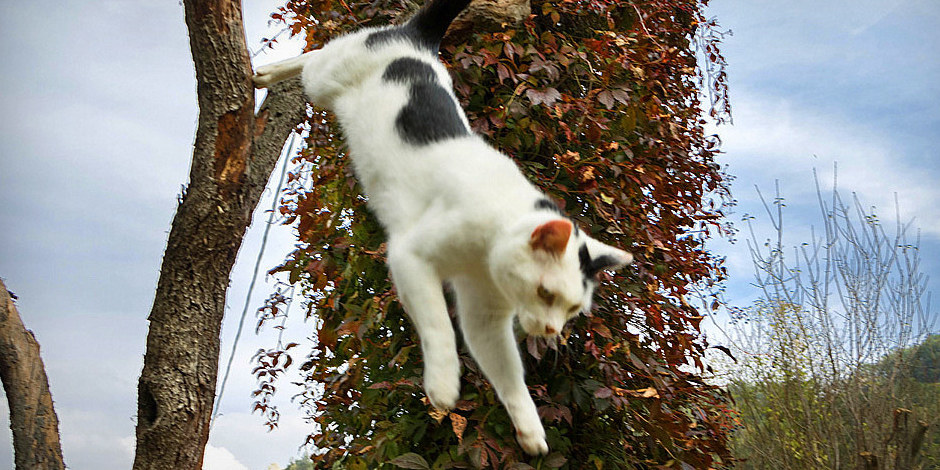It all has to do with the muscles and joints in their legs and backs. Did you ever hear that every action has an equal and opposite reaction? That’s the main physics principal at play here. When a body collides with the ground, it hits the ground with a certain force which is determined by the body’s weight and how fast it is falling. The ground exerts this force back on the body and, if the body cannot absorb this force, injury occurs. If the force is too much for the muscles and bones, it will result in tears, breaks, and all sorts of injuries. Evolution made sure cats could easily absorb extremely high impact forces, allowing them to walk away from feats that would hospitalize any human.
A study done to analyze cat movement found that cats are really good at positioning themselves in the air before they land. They make sure they are at the right angle to distribute the forces throughout their body in a way that won’t cause injury.They make sure that the force is directed to their flexible elbows and hips, and not their ankles. A different study compared forces in the right forelimb and the right hindlimb of cats jumping from different heights. The study found that for jumps higher than 2 meters, cats would allow their back legs to absorb the bulk of the forces. Cats do this by varying how quickly they put their back legs down after their front paws hit the ground. As the jumps get higher, cats decrease the amount of time in between when their paws hit the ground.
But it’s not just cat limbs that make these incredible leaps feasible, their backs play a huge role in the process. Cats are experts at using their backs to manipulate kinetic and potential energy. Potential energy means that the object is capable of doing work because of its position and circumstances. Think of a roller coaster at the top of a hill, it may not be moving, but it has the potential to go racing down that hill. Once that roller coaster starts moving, the potential energy is converted into kinetic energy, which is the energy of motion. The angle that cats position themselves in to land not only dictates their limbs, but stretches their flexible backs out. This increases the amount of potential energy the cat has, even with their front paws on the ground. As cats put their back legs down, they curl their backs. This turns all that potential energy into kinetic energy that is sent to their knees and hips. Their limbs and back work in harmony to deal with the immense energy that comes from impressive jumps.
